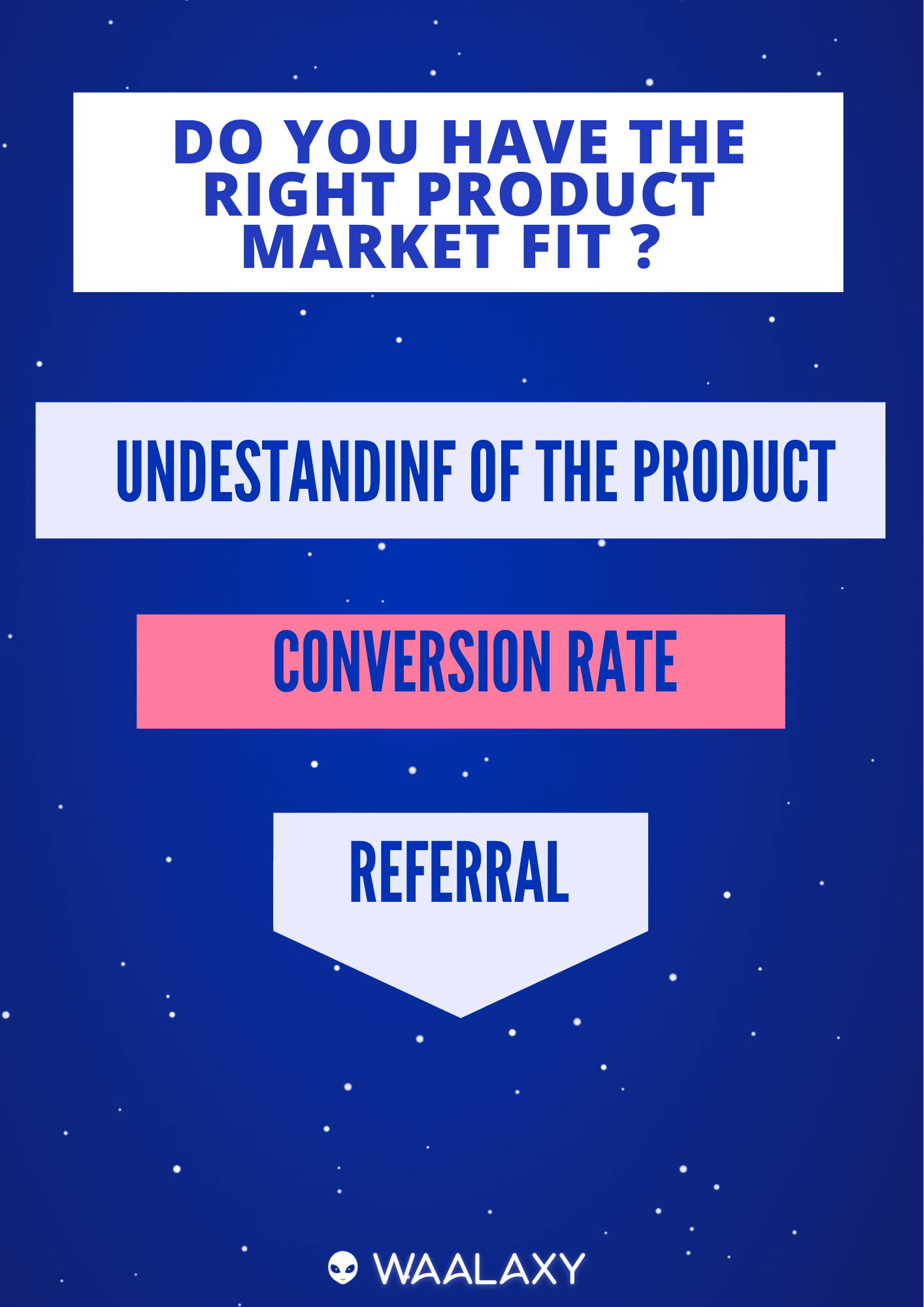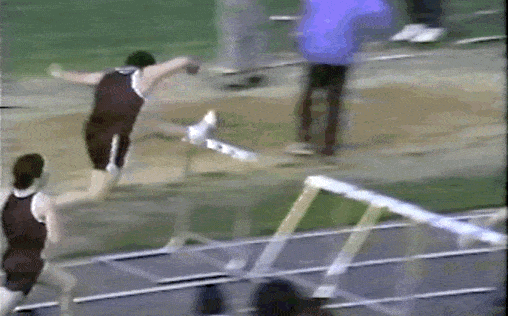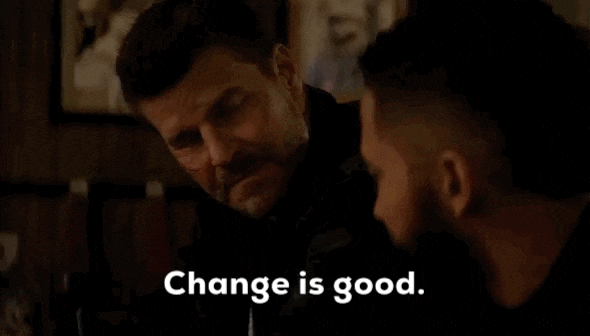- What is product market fit?
- From 0 to 1M$ revenue in 9 months = No fundraising
- Product market fit vs. Go-to-market
- How do I achieve product-market fit?
- How do you know if you’ve reached product market fit?
- The difference between B2b and B2c MFP
- Conclusion: How do you go about validating the product market fit?
“The product market fit”. The Holy Grail, which promises eternal growth. 👑
“Zero to one”, say the Americans, in reference to Peter Thiel’s eponymous bestseller.
There is a concept in the startup world that may seem theoretical and rather vague.
Which framework for your Product-market fit?
There are some pretty basic frameworks to help you ask yourself the right questions when looking for the right market fit.
They are both available in Martin and Sofia’s Live, right here. 👇
However, it is very real and perfectly clear, and it comes even before you start your prospecting strategy.
“It is a momentum in which a product or service perfectly meets the market need.” – Toinon.
Product Market Fit is a bit like a first orgasm. Before, you always wonder if you have it yet. When you really have it, there’s no doubt about it. 😇
Well then, if like us, entrepreneurship and innovation is your driving force, you’ll love the rest.
Boost your product market fit without breaking the bank.
What is product market fit?

Product-market fit is the “perfect match” between a product and its market. This is the stage where the product becomes the obvious solution for the target. They understand it, buy it and don’t hesitate to talk about it around them.
💡 Thought experiment to understand PMF: What is so compelling and strong in value and message that it will cause buyers to ignore other local suppliers and any established international suppliers and take a chance on me?
Pre product market fit
You have a product or prototype.
You are developing it.
You pretty much know where you plan to go with it, but you don’t know if the market is interested and what exactly they need.
💡 Get real: without testing, and without asking users for feedback, you’ll never really know what the market needs.
You haven’t adapted your product to the market yet, and your actions should be limited to getting leads or users to get feedback and adjust your product.
You are making adjustments. it’s pre product market fit. 🔥
Post product market fit
You’ve reached enough feedback to be able to tweak your product and make it perfect or close to perfect for your target.
You are in the process of fine-tuning the little details.
The user feedback is satisfactory.
Now you have two options, either go solo, like han, or find investors to scale up.

From 0 to 1M$ revenue in 9 months = No fundraising
It’s clearly possible to launch and be successful without setting up a huge fundraiser. There are several pillars that will help you launch your project a little more serenely.
Want to know how Waalaxy went from €0 to €1M without raising funds?

Find the article right here. 👀👀 (you’ll need to click left on the page > translate to > english ).
[maxbutton id=”47″]
Option #1 You go it alone or with a team.
There are several ways to raise enough money to start a project,
- You can have several founders like with Waalaxy.
- You may already have a small amount of capital set aside.
- You can ask your friends or family for a loan.
If you want to learn more about it, here is a list of pros and cons. 😊
The advantages of a start-up without fundraising is that you are not accountable to anyone but yourself (and your employees if you have any).
No one above you will tell you that you are doing things wrong, and when you decide to be an entrepreneur it is also because you don’t want a boss. So you need to think about everything that is feasible before taking the “easy” way out, which can make the growth process more complex.
Option #2 You need to raise funds?
No reason to blush here, many have done it and are doing great.
It’s Swile that’s getting a lot of press, even in the “Le monde” and techcrunch article’s. The company based in Montpellier is becoming the giant of the restaurant card and explains in this article how they got there and how far they want to go.
- You can launch a Crowdfunding,
- You can find business angels.
A business angel is an investor, who decides to invest part of his/her financial assets in your startup, because he/she thinks that your project has a strong potential of success.

There are several steps to finding a business angel:
Contact investors on LinkedIn: Set up a real prospecting strategy to contact only business angels. Learn how to segment your search. 👀
Send them (as a second step) a business plan: find out how to get started on a business plan here.
Get 15 minutes of their time: this is called an “elevator pitch“. These are the few minutes that will help you convince the investor to believe in your project. I’ve put a short video below to help you to learn more.
Option #3 Enter an accelerator program
These are called “accelerator“s or “incubators”.
- An accelerator = short term. Invest in your company. Increase and grow your business.
- An incubator = long period of time. Upfront capital and mentorship.
“They are an ecostyle of entrepreneurship in which startups network and boost partnership to accelerate their development.”
The first example I have in mind is The Family, in Tech.
Their slogan is “building ambitious start-ups”. Think the building of a French-style Silicon creative Valley. I like the idea. 😎
If you want the full list, you can check out this article. 👀
Me, I really see the whole incubator entry process as a high school project.
Incubators choose which projects they want to support. The selection is done in two stages:
A pre-selection based on applications. Just like getting into college,
A passage in front of a committee. A bit like an oral exam.
In the end, the courses were useless. 😂
In your portfolio you’ll need your business plan and your business model (the way you are going to make money and the estimation of your profits in the long term).
The business model canvas, it’s a super simple tool that we use to transcribe in a way the economic model of a company.
If you need templates : Business model canvas. 👈
Once it’s validated, in the same way as if you were looking to find a business angel, the incubator will check the soundness of your plan and your ability to sell it.
Once you’re in, you have access to
- Advice from experts in business start-up,
- Specialized training,
- A large network,
- Sometimes an offcie or co-working spaces.
- Financing (direct contact with investors).
Option #4 Start-up competitions and calls for projects
In order to gain visibility and to offer yourself a nice springboard, you can very well decide to participate in innovation and start-up competitions.
This will allow you to :
- To test an idea,
- Get feedback,
- Land on the cover of a publication,
- Accelerate the growth of your project,
- Be in a place of innovation with other CEOs.
- Place yourself as an innovative startup in the market.
Here is one of the greatest opportunity in the US. 👀
Product market fit vs. Go-to-market
Finding product market fit is the process of finding the right product to meet the needs of the market. 🎯
Go-to market fit is the action of getting your product to market. It involves structuring and organizing the release of a product or service.
Thus, going to market is the next step in the strategy – launching the product.
10 questions to find your product market fit
How do you know if the product is market fit or vice versa? 10 questions to ask on paper to help you visualise things better:
- #1 What is the ideal market segment to export my business to? Why?
- #2 Who are the decision makers, the people who influence decisions?
- #3 What are their personal issues, needs, wants and outcomes? Don’t overestimate the problem. They don’t have a problem because we have a solution. ❌
- #4 Is my offer valuable and relevant to them? Why now?
- #5. What are the alternative solutions to solve their problems, meet their needs, and achieve their desired end results? Think outside the box, sometimes the solution isnt the one you might think of first. 📦
- #6 Who are my business competitors?
- #7 How is my solution different from other solutions? Price is not a good answer. ❌ There is or will always be someone cheaper than you, so you need to think about the added value you bring to the market.
- #8 How can I communicate and demonstrate my differentiators in an email?
- #9 What is the general adoption of the problem/solution in this market segment?
- #10. Do I have authority and credibility in this area? You still need to prove it – blogging is the best way to explain what you know.
How do I achieve product-market fit?
There are 5 ingredients to determining product-market fit. You define them, then measure them:

- Offering = a service, product, solution?
- Target = Small and medium-sized companies may need a different product than large companies.
- Message = You need to develop your sales messages and articulate your value proposition. This is super important. 🔥
- Channel = Where is your target and what channel will you talk to them on?
- Tactics = Cold email, Framework, content strategy…

How do you measure product market fit?
The following three metrics are just the foundation of your PMF. You absolutely have to make sure that it is clear to your target.

Product understanding
What is the product used for and by whom? What is its added value on the market?
To find out how to measure this, simply ask your beta testers about their understanding of both the message and the tool.
- #1 Do you know what the tool does?
- #2 How is the tool used?
- #3 Is the value conveyed in the message comprehensive?
- #4 Does the value proposition of the message match the use of the tool?
If the product is not well understood, you can’t move on to the next steps. You’re not going to reach your target widely and you’re going to break the bank. Rework your message, then repeat the study.

The conversion rate
How many people, test, buy, download your tool. It all depends on what you offer, the metrics will vary. If you are in a test period, you must ask users if the tool is interesting:
Do you find real value in the tool?
Would you continue to use the tool after the test phase?
You will then have to calculate the conversion rate.
This is the calculation between the number of people who were contacted and the number of people who performed the conversion action you are measuring (download, purchase…).
🅰 Be careful: don’t mix metrics, only compare what is comparable.
For example, if you recorded 10 conversions from 1,000 interactions, your conversion rate is 1% (10 ÷ 1,000 = 1%).
🅰 Just because the user thinks the product is cool, doesn’t mean they will pay for it.
- Are they willing to pay for the solution? If so, how much?
- Will it be profitable enough?
- How do you analyze the ROI? (return on investment).
The Refferal
Customers and users are satisfied, and they talk about their satisfaction. Word-of-mouth is an incredible force, very difficult to calculate in terms of conversion, but essential to any business.
To calculate the Refferal, you can ask your users:
How did you find our product? Advertising, word of mouth, social network…
Would you recommend this tool to others?
To boost refferal, you can have a system of ambassadors who will promote your brand and talk about it to others.
🅰 If you identify a problem in your MFP, do one experiment at a time. Don’t overcomplicate the study or you may end up with data that isn’t actionable.
How do you know if you’ve reached product market fit?
The best article on product market fit that I found is this one.
A simple, but effective way to measure the product/market fit is:
- Take a segment of people corresponding to your target,
Have them test your product over a given period of time, - Send them a satisfaction survey.
This is the PMF survey. It was popularized by Sean Ellis who led the growth of Dropbox, Eventbrite, LogMeIn and Lookout. No biggie. 😱
The survey is simple, users are asked one question: how would you feel if you could no longer use the product?
- 1. Very disappointed.
- 2. Somewhat disappointed.
- 3. Not disappointed (it’s really not helpful).
- 4. N/A – I don’t use it anymore.

Measure product market fit
If 40% or more of your customers say they would be very disappointed if the product went away, then yay for achieving enough product market fit to launch it. 🥳
If it’s only 25-40% who say they would be very disappointed, you can still reach the 40% threshold with some adjustments to your product.
However, a more substantial development (or pivot) would be needed if it is less than 25%.
To go further > Measure product market fit based on your product by Startupfood. 👇
Know your target’s needs
To summarize the live just above, there is no miracle recipe to product market fit.
Because there is a vast choice of product, market and target audience. You need to find the right KPIs (success indicators) that prove you are on the right path.
It’s a super boilerplate phrase, but it’s important for me to repeat it: the target is the key. 🔑. Definitely don’t think you know in advance what your target wants. You have no idea.
Are you addressing the right target and what do they look like? Define one or more clear personas.
To know their needs, you must:
- Be your tool’s first user.
- Question your prospects, ask them questions, get their feedback.
- Always have new testers. As many as possible.
- The key to success: talk to your target
There are several statements that few people know:
- We do not look for the PMF in the same way. It all depends on your target and business.
- In general, it is possible to test your MFP before having a product. A WordPress landing is done in 2 days, a system of registration to a beta with a very simple landing page and a sign up for a beta, as done here with Inbox waalaxy.

- Use a public roadmap: (very few startups do this and at Waalaxy we’ve received great feedback with this). You just have to go on Trello, and update cards on the progress of your project. These can be seen and commented on by users testing the tool.

- Having a support chat (if the product is suitable) and delegating it as late as possible is a good option. It provides lots of insights (user feedback).
- Throwing a few hundred dollars into hard LinkedIn Ads at the beginning will help you get your first testers without breaking the bank.
The difference between B2b and B2c MFP
If your target is B2b, you need to network. Go and get your first customers with testing phases via LinkedIn by sending personalized messages.
In B2B, the easiest way is to look for leadq on LinkedIn by saying something like :
“We’re launching a new product that helps you […], we’re looking for constructive feedback from people facing this problem, it would be great if you could give us your opinion and tell us if it really makes your life easier”
In B2C launching a Crowdfund can be a good way to test a MFP or just a few hundred euros on Facebook Ads to test the conversion.
Test different acquisition channels depending on your target, it’s smart to start. Anyway, one thing you should know is that everyone around you can tell you what is best and you can read hundreds of articles like this one, but only A/B testing will really tell you how your target reacts to your product and your communication message. 🚀
Myths about product market fit
You never scale after product market fit, but before. WRONG ❌
Before product market fit, entrepreneurs row the boat and set sail into the wind. As long as you’re wondering if you have PMF, you don’t have it. And all the while, the acquisition, the finance, the legal are all for nought. You only have one goal: to make a product that people want. ✅
People complaining to support is an indicator of a problem. WRONG ❌
The value proposition pleases users, so they came to test out the product, but in it’s current state, it didn’t meet their expectations. ✅
If they take the time to complain, there is potential. If not, people just walk away without saying anything 😉
If there are competitors in the market, it means you shouldn’t go there. WRONG ❌
If there are competitors in a market, it means it’s a growth market. If you find a product and no one is in your market, chances are others have tried before you and fallen flat on their face or the product doesn’t really meet a user’s demand. In short, if you have a good idea, someone has had it before you.✅
Don’t be afraid to innovate. Just meet the demand even better, and launch your version 😉
Price is a competitive advantage. WRONG ❌
It’s super hard to put a price on your product when you’re in a launch period. You’ll tend to make it cheap, to get more users. That’s a big mistake.
Scoop Alert: In a hyper-competitive market, there will always be cheaper than you. You absolutely must base your added value on a quality criterion or real differentiation. ✅
Someone will, sooner or later, come along and do the same thing as you for less, and if that’s all you have to offer, you’re going to lose.
The limits of product market fit
It’s not just product-market fit that will make your business a success.
You are not out to revolutionize the market. Although the ambition is nice, you should create a product to bring value. Period.
While the market fit of the product is part of the framework, it is far from the ultimate answer to all your needs.
The problem with the mantra of “product market fit” at all costs is that we have taken it to the extreme and developed tunnel vision.
Statements like “Product-market fit is the only thing that matters” have become commonplace.
It’s not the only thing that matters.
There are many startups that have all the product-market fit signals, but still struggle to grow or even fall apart.
Why?
- They have not integrated an incubation system and have no network.
- They don’t have the necessary budget and are afraid to raise funds.
- They don’t have the right digital marketing techniques.
- They can’t scale because they don’t use marketing automation.
There could be a lot of reasons. It’s all about getting all the launch steps right. A little more info on that below 😉
Top 5 best B2b marketing automation software. 👀
Faq of the article
VRCU (convey the message and value your product brings to the market):
Value = what value does your product add?
Relevance = does it really matter, does it address a problem?
Curiosity = How will you convey your message?
Urgency = How do you make the prospect need it now?
OTMCT (the 5 steps to think about before launching your product):
Offer = Product description.
Target = Persona description.
Message = Describe the value proposition and brand identity.
Channel = Which acquisition channels to use. (Digital marketing to start).
Tactics = Frequency, budget, implementation.
Conclusion of the article
How do you do a test step for product market fit?
It is important to make sure that you have the right product market fit. For this you can test your product. You should always test with your main target audience.
- Make samples to test.
- Open a beta test session of your digital tool.
Make sure you always have as much user or potential customer data as possible. You need to collect as much feedback as possible on the tool in order to make any changes before launch. The testing period varies greatly depending on the industry, targeting and improvements to be made.
Conclusion: How do you go about validating the product market fit?
The product market fit validation stage is sacred. As a reminder, it is the launch of your entire mareting campaign and your sales strategies that will result from this step. Once you are sure you have the right product, you can choose whether or not to patent it.
Next, you will:
- Define your sales tunnel, (or conversion funnel)
- Write your message or the story of your brand and your product, to launch the brand content.
- Communicate online with both SEO and SEA.
Well then, ready for entrepreneurship? We believe in your innovative project. Don’t hesitate to send your landing page to Toinon, our CEO through an automated message via Waalaxy.
[maxbutton id=”47″]
You can send him a:
“Hey, since I’m using your product, would you mind testing mine? I think I have the right product market fit and you’re in my target audience.”
I’m sure you’ll get some feedback from him. 😉
Lots of love and see you soon. 💖










